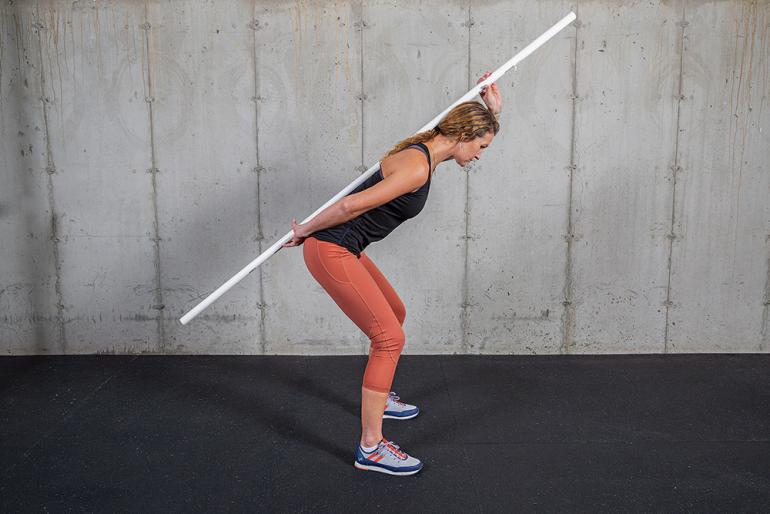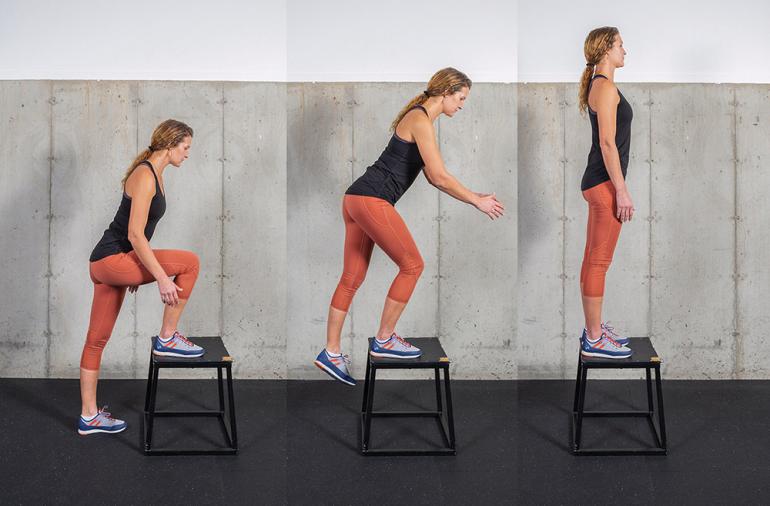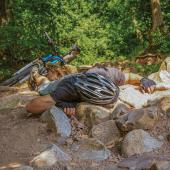Train the Frame
Mastering the hip hinge.
Whether you’re racking up face-shots high on the mountain or gliding over a freshly groomed Nordic trail through a forest of glittering trees, you’ve probably experienced some pain or discomfort from the all-out physical exertion. I want to help you mitigate the suffering and keep getting after it by giving you some tools to keep your body moving and feeling good all winter long.
Many common injuries related to ski touring and cross-country skiing are the result of muscular imbalances or poor movement patterns. When there is a weak link in the kinetic chain, our bodies will still find a way to get the job done by recruiting other muscles to compensate for that weakness. This may result in repetitive overloading of a different muscle or muscle group, becoming more prevalent and apparent when you are pushing your physical limits. As you fatigue, compensatory patterns take over.
Being strong is important, but strength alone is not enough. You need to be able to use those strong muscles with appropriate timing and coordination to achieve stability, while simultaneously generating movement and power through other areas. You need to train the brain to recruit several muscle groups simultaneously for the desired outcome.
This process starts with a stable trunk. Often, when people think of the core, they think of sit-ups and six-packs, but the core is so much more than that. The core consists of any muscle that attaches to the spine or pelvis, including the diaphragm and pelvic-floor muscles. The primary role of our core in both day-to-day and athletic movements is to create a stable base for our other muscles to generate movement from. If you lack stability in the trunk and spine, not only are you more susceptible to shear forces and spinal injury, but you are less efficient in your movement because energy is lost instead of transferred through the body.
Once you’re able to create that needed stability in the trunk, you can tap into your big powerhouse muscles to propel you forwards, upwards, or help absorb shock and load on the downhills. It is essential to have strength in the quads to help with this, as well as to protect the knee joint. However, oftentimes people come into the clinic for injuries that demonstrate a quad-dominant strategy and underutilize their glutes. The glute max, which brings the hip into extension, is the biggest muscle in the body, and should be a big contributor to getting you up that hill or around that track. Underutilization of the glutes can manifest as knee pain, back pain, or hip pain caused by shifting the load to other areas. Good exercises that tap into the posterior chain include deadlifts and a hip-dominant squat or step-up.
A crucial movement pattern for utilizing the glutes and protecting the spine is the hip hinge. The hip hinge is just as it sounds: a hinging motion at the hip joint while maintaining a neutral spine. A good way to practice this is by performing a hip-hinge squat. Grab a ski pole or broom and hold it behind you, with one hand above your head and one below your tailbone. Straighten your back so the pole is contacting your lower back, between your shoulder blades, and the back of your head. Now hinge forward at the hips and bend the knees, maintaining these three points of contact between the ski pole and your back to make sure you are keeping your spine neutral. Other good ways to train this movement are utilizing a hip hinge with a step-up to make it more glute dominant, and practicing a single-leg hip hinge.
Mastering this movement allows you to maintain a stable and safe position for the spine, and puts your body into a position for easily tapping into the power in your glute muscles. This movement pattern can apply to simple daily tasks like picking up your kid or folding laundry, as well as shoveling, Nordic skiing, and skinning. It sounds easy, but this can be a challenging task to master. You need to learn to separate movement at your spine from movement at your hip. Initially this takes effort, but through repetition, it can become your default movement pattern without having to think about it.
Be strong, move well, stay healthy.
Jessica Kotnour, PT, DPT, OCS, is a board-certified orthopedic specialist through the American Physical Therapy Association. She enjoys learning about the body and movement to keep herself and others doing the things they love. Contact her at [email protected] with questions or feedback.












